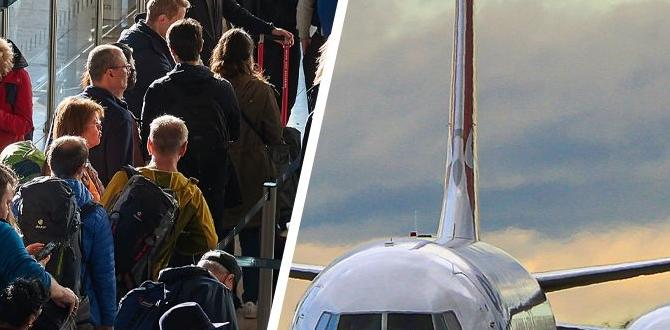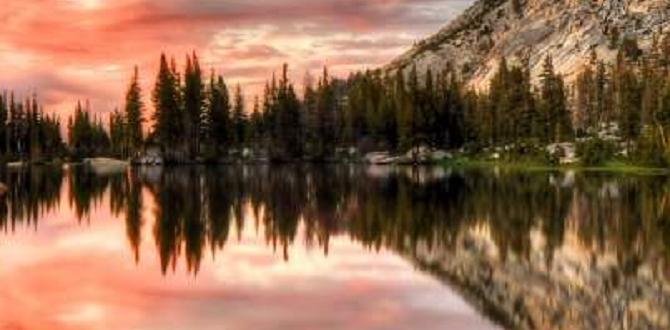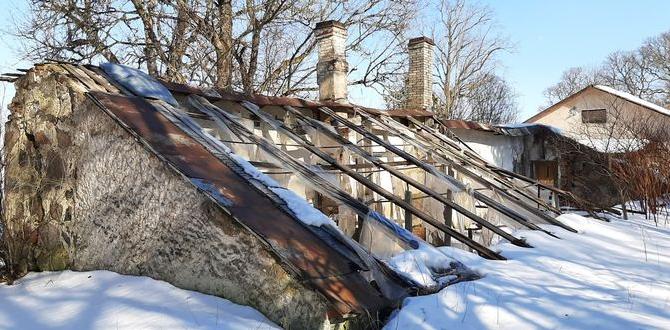The best time to visit the Atacama Desert is during the shoulder seasons – April to June and September to November. These periods offer pleasant temperatures, clear skies for stargazing, and fewer crowds, making for an effortless escape to this unique landscape.
Planning a trip to the Atacama Desert can feel a bit overwhelming, especially when you’re trying to pinpoint the perfect time to go. Will it be too hot? Too cold? Packed with tourists? Don’t worry, fellow travelers! It’s a common question, and finding that sweet spot can make all the difference in your experience. We’re here to break down the Atacama Desert’s climate and visitor patterns so you can plan your adventure with confidence and ease. Get ready for an unforgettable journey into one of the driest places on Earth!
Atacama Desert Best Time: Your Guide to an Effortless Escape
Hola, adventurers! Michael C. Herrera here from Journey Essentials. Planning a trip to a destination as unique and vast as the Atacama Desert is exciting. Known as one of the driest places on Earth, it’s a land of stark beauty, otherworldly landscapes, and some of the clearest night skies you’ll ever witness. But when is the best time to pack your bags and head to this Chilean marvel?
The truth is, the Atacama Desert has a rather consistent climate year-round due to its extreme dryness. However, “best” often depends on what you want from your trip: fewer crowds, optimal weather for exploring, or the clearest stargazing opportunities. Let’s dive into the details to help you choose your ideal Atacama adventure.
Understanding Atacama’s Climate
The Atacama Desert is defined by its extreme aridity. Situated between the Pacific Ocean and the Andes Mountains, it receives very little rainfall, averaging less than 15 mm (0.6 inches) per year in many areas. This means you can expect sunny days almost every day of the year.
However, temperature variations are significant, especially between day and night. Altitude also plays a crucial role in temperature. San Pedro de Atacama, the main tourist hub, sits at about 2,400 meters (7,874 feet) above sea level. Many excursions take you to even higher altitudes, like the El Tatio Geysers, which are at over 4,300 meters (14,000 feet).
Temperature Averages by Season
To help you visualize, here’s a general breakdown of temperatures you can expect:
| Season | Months | Average Daily High (°C / °F) | Average Daily Low (°C / °F) | Notes |
|---|---|---|---|---|
| Summer | December – February | 28-30°C / 82-86°F | 10-12°C / 50-54°F | Hottest, with occasional rare “altiplanic winter” rain in the highlands. |
| Autumn | March – May | 25-28°C / 77-82°F | 8-10°C / 46-50°F | Pleasant temperatures, fewer crowds than summer. |
| Winter | June – August | 20-23°C / 68-73°F | 2-5°C / 36-41°F | Coolest, clearest skies for stargazing, dry. |
| Spring | September – November | 26-29°C / 79-84°F | 8-10°C / 46-50°F | Warming up, good balance of weather and visitor numbers. |
As you can see, even in winter, daytime temperatures can be quite pleasant. The real chill comes after sunset and at higher elevations.
When to Visit for Fewer Crowds
If your goal is an “effortless escape” with fewer fellow travelers, then the shoulder seasons are your best bet. The peak tourist season in the Atacama Desert generally aligns with South American summer holidays and major international breaks.
- Shoulder Season Sweet Spot: The months of April to June (Autumn) and September to November (Spring) typically see fewer tourists. The weather is still very agreeable, offering a fantastic balance of comfort and tranquility. You’ll find it easier to book tours, get great spots at viewpoints, and enjoy a more relaxed pace.
- Avoiding Peak Times: Try to avoid visiting during the main South American summer holidays (December to February) and major Easter (Semana Santa) periods. These times can bring a noticeable increase in visitors to San Pedro de Atacama and popular sites.
Traveling during these less crowded periods means a more serene experience, allowing you to truly connect with the magnificent landscapes without feeling rushed or overwhelmed. It’s perfect for those who appreciate a bit of quiet contemplation amidst the desert’s grandeur.
The Best Time for Stargazing
The Atacama Desert is a world-renowned hub for astronomical observation, thanks to its high altitude, low humidity, minimal light pollution, and consistent clear skies. For the absolute best stargazing, consider these factors:
- New Moon Phases: The darker the sky, the more stars you’ll see! Plan your visit around the new moon. A quick search for a moon phase calendar will help you align your travel dates with the darkest nights.
- Winter Clarity (June – August): Many astronomers consider the Atacama’s winter months to be superior for stargazing. While it’s colder, the atmospheric conditions are often exceptionally stable and dry, leading to incredibly sharp views of the cosmos. Professional observatories like ALMA often have their best observation windows during this time due to the optimal atmospheric conditions.
- Year-Round Opportunity: It’s important to remember that the Atacama’s skies are phenomenal year-round. Even outside of winter, the lack of light pollution and consistent clear weather make it an unparalleled stargazing destination. Many tours are available nightly, and you’ll be amazed even if you can’t time it perfectly with a new moon.
For an even deeper dive into the science and best viewing times, resources from organizations like the European Southern Observatory (ESO), which operates several telescopes in the region, can provide insights into atmospheric transparency and optimal viewing periods.
Considering Weather for Activities
While the Atacama is known for being dry, different activities might be better suited to certain times of the year, especially when considering comfort.
Daytime Exploration
For comfortable daytime exploration of sites like the Valley of the Moon (Valle de la Luna) or the Salt Flats (Salar de Atacama), the shoulder seasons (spring and autumn) offer the most pleasant temperatures. You’ll experience warm to hot days without the extreme heat of summer, and without the biting cold of winter mornings and evenings.
High-Altitude Adventures
Excursions to places like the El Tatio Geysers, Miscanti and Miñiques Lagoons, or the Puritama Hot Springs often involve early morning starts and high altitudes. These locations are significantly colder, especially before sunrise. If extreme cold is a concern, consider the warmer months (December-March) for these trips, though be aware of the potential for slightly higher visitor numbers.
Traveling to extreme altitudes requires preparation. Ensure you’re well-hydrated and aware of the signs of altitude sickness. Consider packing layers, including windproof and waterproof outer shells, regardless of the season, as conditions can change rapidly, especially at higher elevations.
Flower Blooms (Desierto Florido]
A very special, albeit rare, phenomenon occurs in parts of the Atacama Desert known as the “Desierto Florido” or “Flowering Desert.” This happens when El Niño-related weather patterns bring more rainfall than usual to the arid region. When this occurs, incredible blooms of wildflowers emerge astonishingly across the desert landscape.
- When it happens: Typically, these blooms occur after significant rainfall, most commonly between May and November, with peak flowering often observed from August to October in coastal areas and later in the interior.
- Unpredictability: This is a highly unpredictable event and depends entirely on rainfall patterns, which are scarce in the Atacama. Not every year experiences a significant flowering.
- If you’re lucky: Witnessing the Desierto Florido is a truly magical experience and can be a fantastic reason to visit if the conditions are right. Keep an eye on local news and tourism reports if you’re planning a trip during these months and are hoping for this spectacle.
While you can’t plan your trip for the Desierto Florido, if you happen to visit during a year when it occurs, you are in for an extraordinary treat.
Sample Itinerary Planning: By Season
To solidify your decision, let’s look at how travel timing can shape your itinerary.
Scenario 1: The Stargazer & Serenity Seeker (Winter: June – August)
Focus: Supreme stargazing, crisp air, fewer crowds.
- Pros: Unparalleled clear skies for astronomy, very few tourists, dramatic landscapes often dusted with frost in the mornings.
- Cons: Cold temperatures, especially at night and early mornings (require serious layering).
- Activity Highlights: Nightly stargazing tours, visiting El Tatio Geysers pre-dawn (bundle up!), exploring San Pedro’s charming streets in quiet solitude, marveling at the stark beauty of the salt flats under crisp winter sun.
Scenario 2: The Comfort Explorer (Spring: September – November or Autumn: April – June)
Focus: Pleasant temperatures, good balance of activities and crowds, clear skies.
- Pros: Ideal daytime temperatures for hiking and exploring, comfortable evenings, decent stargazing opportunities, manageable visitor numbers.
- Cons: Nights can still be cool, potential for occasional “altiplanic winter” rain in higher elevations during spring months (though rare and usually brief).
- Activity Highlights: Full days exploring Valle de la Luna and Valle de Marte, visiting high-altitude lagoons (Miscanti, Miñiques) without extreme cold, relaxing in Puritama Hot Springs, enjoying sunset tours, and evening stargazing. This is often considered the “best of both worlds.”
Scenario 3: The Summer Adventurer with Cautious Planning (Summer: December – February)
Focus: Hottest daytime temperatures, potential for unique weather events, peak crowds.
- Pros: Generally warmer overall, making high-altitude tours feel less harsh in the early morning. Possibility (though rare) of witnessing the “Desierto Florido” in coastal areas if El Niño is present.
- Cons: Hottest part of the year (can be intense midday), highest number of tourists, possibility of rare “Altiplanic Winter” (summer rain) affecting higher altitude tours.
- Activity Highlights: Geyser tours early morning before the heat builds, exploring easier-access areas like the Salt Caves, enjoying warmer evenings, and being prepared for crowds at popular spots.
Remember, even in summer, the desert air is dry, so hydration is key. For families traveling with younger children or those needing extra comfort for longer journeys, packing essentials is crucial. This might include ensuring you have comfortable, breathable clothing, and for any extended travel or sensitive situations, having discreet and reliable personal care items like adult absorbent underwear can provide peace of mind, allowing everyone to focus on the adventure. Similarly, parents managing travel with toddlers can benefit from having travel-friendly child diapers, alleviating one less worry on the road.
Travel Tips for Your Atacama Escape
No matter when you choose to visit, some universal tips will make your Atacama journey effortless and enjoyable.
- Pack Layers: This is non-negotiable. Temperatures fluctuate dramatically between day and night, and with altitude. Bring light clothing for the day, sweaters/fleeces for cooler periods, and a warm, windproof jacket for evenings and high-altitude excursions.
- Hydrate Constantly: The dry air will dehydrate you quickly. Drink far more water than you think you need. Lip balm and moisturizer are also your best friends.
- Sun Protection is Key: The sun is intense, even on cooler days. Use high SPF sunscreen, wear a wide-brimmed hat, and sunglasses.
- Altitude Awareness: San Pedro is at 2,400m, and many tours go higher. Take it easy on your first day, avoid alcohol, and stay hydrated. If you have concerns about altitude sickness, consult your doctor.
- Book Tours in Advance (Sometimes): While shoulder seasons are less crowded, and you can often book tours when you arrive in San Pedro, popular night sky tours or specific excursions might benefit from advance booking, especially if you have a very specific itinerary in mind.
- Embrace the Dryness: Your skin and lips will feel it! Keep up with your moisturizing routine.
Conclusion
So, when is the Atacama Desert’s best time? It truly boils down to your personal preferences. For an effortless escape filled with pleasant weather and a serene atmosphere, the shoulder seasons of spring (September to November) and autumn (April to June) offer an exceptional balance. These periods provide comfortable daytime temperatures ideal for exploring, while still delivering clear skies for incredible stargazing and fewer crowds to contend with.
If your primary goal is the most pristine stargazing possible, the colder, clearer winter months (June to August) are a strong contender, provided you pack warm enough. Conversely, if you prefer the warmest days and don’t mind potentially larger crowds or the slight chance of rare rain in the highlands, summer (December to February) can still offer an incredible adventure.
Whichever time you choose, remember the desert’s unique environment demands preparation—layers, hydration, and sun protection are key. By understanding the climate and visitor patterns, you can select the perfect window for your journey. The Atacama Desert is a place of profound beauty and wonder, and with a little planning, your visit will be comfortable,
Frequently Asked Questions (FAQ)
Q1: What is the absolute worst time to visit the Atacama Desert?
There isn’t really a “worst” time, as the weather is consistently dry and sunny. However, if you dislike crowds, the absolute peak summer holiday season (late December to February) and around Easter might be less appealing. If you are extremely sensitive to cold, then peak winter (July-August) mornings at high altitudes might be challenging.
Q2: Will it rain during my visit to the Atacama Desert?
Rain is exceptionally rare in most of the Atacama. The only exception is the occasional “Altiplanic Winter” (or “Winter Boliviano”) which can see brief, usually light, rainfall in the high Andean regions, primarily during the South American summer months (December to March). It’s not common and rarely disrupts travel significantly.
Q3: Is the Atacama Desert very cold?
Daytime temperatures are often pleasant to warm year-round. However, temperatures drop dramatically at night and at higher altitudes. Expect nights to be cool to cold, with temperatures potentially dropping below freezing (0°C / 32°F) during winter at locations like El Tatio Geysers.
Q4: Can I visit the Atacama Desert on a budget?
Yes! San Pedro de Atacama offers a range of accommodation and tour options. Traveling in the shoulder seasons (April-June, September-November) can sometimes offer better deals on accommodation and tours due to lower demand. Opting for shared tours instead of private ones is also a great budget saver.
Q5: What should I pack for the Atacama Desert?
Pack layers: lightweight clothing for day, warm sweaters/fleeces, and a windproof, potentially waterproof outer jacket. Don’t forget sunscreen, a hat, sunglasses, comfortable walking shoes, lip balm, moisturizer, and a reusable water bottle. For colder months or early morning tours, warm pants, gloves, and a beanie are highly recommended.
Q6: How many days are recommended for visiting the Atacama Desert?
Most visitors find that 3 to 5 days are ideal for exploring the main highlights around San Pedro de Atacama. This allows time for key excursions like the Moon Valley, El Tatio Geysers, and stargazing tours, with some flexibility for relaxation or optional activities.





